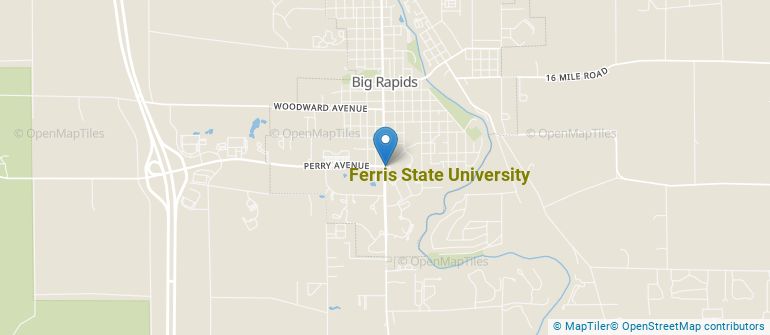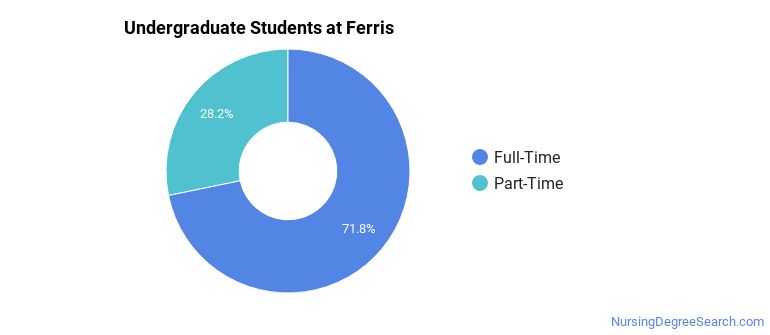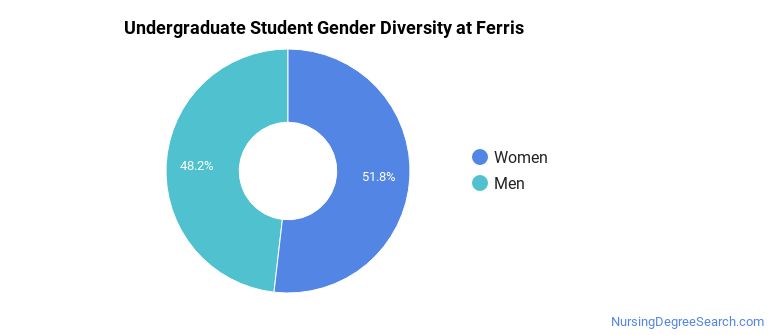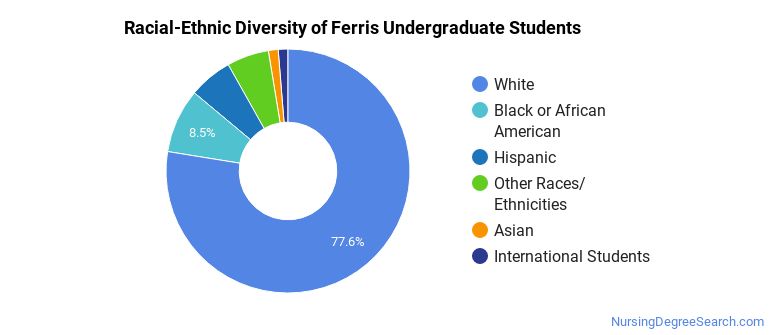Ferris State University Nursing Programs
Ferris State University is a public institution situated in Big Rapids, Michigan. The surrounding location of Big Rapids is ideal for students who enjoy the charms of a college town.
Where Is Ferris State University?

Contact details for Ferris are given below.
| Contact Details | |
|---|---|
| Address: | 1201 S State St, Big Rapids, MI 49307-2251 |
| Phone: | 231-591-2000 |
| Website: | www.ferris.edu |
How Do I Get Into Ferris?
You can apply to Ferris online at: www.ferris.edu/admissions/application/
Admission Requirements for Ferris
| Submission | Required? |
|---|---|
| High School GPA | 5 |
| High School Rank | 3 |
| High School Transcript | 5 |
| College Prep Program | 5 |
| Recommendations | 5 |
| SAT or ACT Scores | 5 |
| TOEFL | 1 |
How Hard Is It To Get Into Ferris?
Approximately 37% of accepted students are men and 63% are women. The acceptance rate for men is 85%, and the acceptance rate for women is 89%.
Average Test Scores
About 63% of students accepted to Ferris submitted their SAT scores. When looking at the 25th through the 75th percentile, SAT Evidence-Based Reading and Writing scores ranged between 460 and 580. Math scores were between 450 and 570.
Can I Afford Ferris State University?
The net price is calculated by adding tuition, room, board and other costs and subtracting financial aid.
Student Loan Debt
Almost 66% of college students who graduated with the class of 2018 took out student loans, but that percentage varies from school to school. At Ferris, approximately 52% of students took out student loans averaging $7,868 a year. That adds up to $31,472 over four years for those students.
Ferris State University Undergraduate Student Diversity

There are also 1,236 graduate students at the school.
Gender Diversity
Of the 7,127 full-time undergraduates at Ferris, 48% are male and 52% are female.

Racial-Ethnic Diversity
The racial-ethnic breakdown of Ferris State University students is as follows.

| Race/Ethnicity | Number of Grads |
|---|---|
| Asian | 92 |
| Black or African American | 607 |
| Hispanic or Latino | 412 |
| White | 5,527 |
| International Students | 92 |
| Other Races/Ethnicities | 397 |
Geographic Diversity
Michigan students aren't the only ones who study at Ferris State University. At this time, 17 states are represented by the student population at the school.
Over 48 countries are represented at Ferris. The most popular countries sending students to the school are Saudi Arabia, India, and China.
Ferris State University Nursing Concentrations
The table below shows the number of awards for each concentration.
| Major | Bachelor’s | Master’s | Doctor’s | TOTAL |
|---|---|---|---|---|
| Registered Nursing | 97 | 0 | 0 | 97 |
| Nursing Administration | 0 | 34 | 0 | 34 |
| Nursing Practice | 0 | 0 | 3 | 3 |
| TOTAL | 97 | 34 | 3 | 134 |
References
*The racial-ethnic minorities count is calculated by taking the total number of students and subtracting white students, international students, and students whose race/ethnicity was unknown. This number is then divided by the total number of students at the school to obtain the racial-ethnic minorities percentage.
- College Factual
- National Center for Education Statistics
- Image Credit: By Michael Barera under License
More about our data sources and methodologies.
